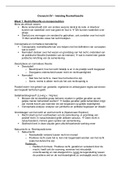Summary
Summary - Introduction to Law
- Course
- Introduction To Law 171
- Institution
- Stellenbosch University (SUN)
My summaries provide an in-depth, comprehensive explanation of basic legal concepts that are needed to further your legal studies. The notes are straightforward and clear, without any unnecessary information.
[Show more]











